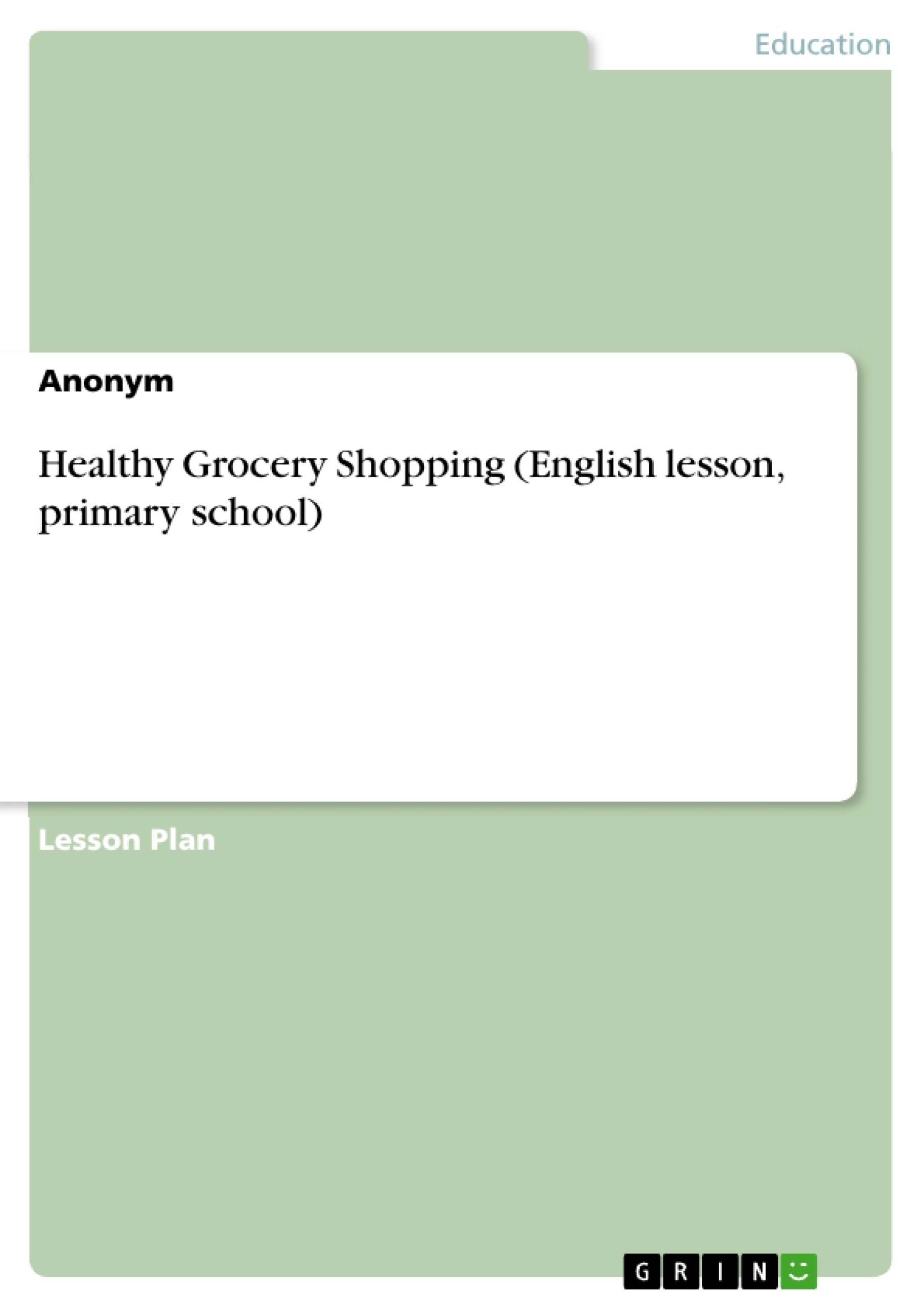This contains an English lesson for primary school. The topic is: '"Healthy Grocery Shopping". The described lesson on hand is part of a whole unit dedicated to the topic "Going Grocery Shopping" which aims purposefully for applicability of foreign-language skills. The unit addresses mainly communicative competencies like "Verfügbarkeit von sprachlichen Mitteln", more specifically "Wortschatz und Redemittel" by giving the children opportunities to not only express themselves but also interview classmates, work and reflect with them and presenting their results together. While doing this, authentic and true-to-life situations play an important part in catching the children’s interest and showing them the topic’s relevance to their life outside the classroom. In the case of the topic Going Grocery Shopping the relevance can be found in itself since every human being needs food and drinks and has to go grocery shopping or shopping at a market at one point in his life. For that reason, the unit can be assigned to the "Erfahrungsfeld: jeden Tag und jedes Jahr".
Inhaltsverzeichnis (Table of Contents)
- 1. THE UNIT
- 1.1 Going Grocery Shopping
- 2. THE LESSON
- 2.1 Healthy Grocery Shopping
- LITERATURE
- APPENDIX
Zielsetzung und Themenschwerpunkte (Objectives and Key Themes)
This lesson focuses on equipping students with vocabulary and communicative skills to handle everyday situations in English, particularly related to healthy grocery shopping. It emphasizes practical application of language in real-life contexts, building upon prior learning about common fruits and vegetables.
- Developing vocabulary related to healthy food and grocery shopping.
- Improving communicative skills through interactive activities.
- Understanding the importance of a healthy diet.
- Exploring connections between vocabulary, movements, and real-life situations.
- Creating a fun and engaging learning environment through activities like a cooking show.
Zusammenfassung der Kapitel (Chapter Summaries)
The unit "Going Grocery Shopping" is designed for second-grade students and aims to enhance their communicative competencies in English. The lesson on "Healthy Grocery Shopping" focuses on vocabulary related to healthy food and provides activities to help students remember and apply the vocabulary in real-life situations.
- The first chapter explores the unit's objectives and framework, highlighting the importance of practical language application. It introduces the concept of a healthy cooking show that will be presented at a school festival.
- The second chapter details the lesson on "Healthy Grocery Shopping," which aims to reinforce vocabulary related to healthy food and encourage students to express themselves in English.
Schlüsselwörter (Keywords)
The key themes of this text are the importance of communicative language skills, the relevance of real-life applications in language learning, and the development of vocabulary related to healthy grocery shopping.
- Citation du texte
- Anonym (Auteur), 2018, Healthy Grocery Shopping (English lesson, primary school), Munich, GRIN Verlag, https://www.grin.com/document/520414



